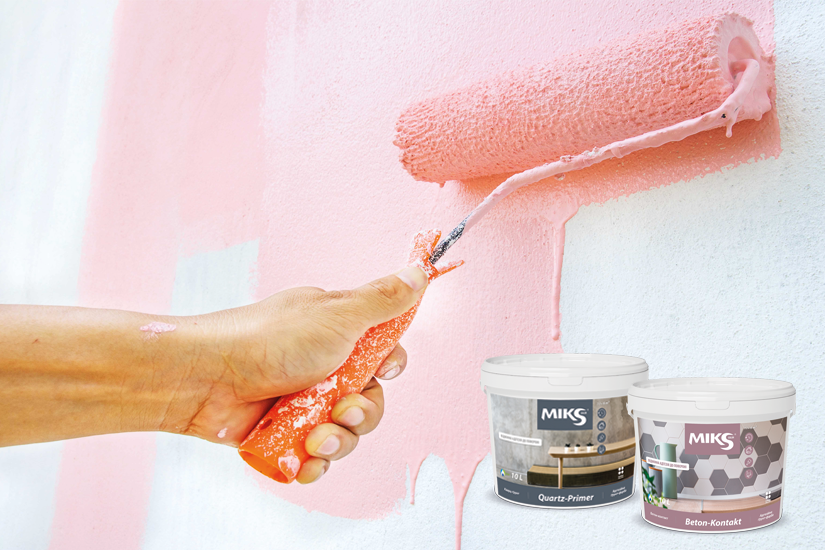
Recently, Miks color brand’s line of architectural coatings has been supplemented with two interesting materials – “Quartz-Primer” and “Beton-Kontakt” adhesive priming paints. What is so special about these coatings and are there significant differences between “quartz primer” and “concrete contact”? Apart from the color, of course, because “Quartz-Primer” is white, and ” Beton-Kontakt” has a pink shade.
First of all, let’s pay attention to the purpose of the coatings – both are primers with the addition of quartz sand to improve adhesion, simply put – they make smooth surfaces rougher, so that they better hold the next layer of coating. However, they differ in the bases on which they are applied, the coatings that are then applied as finishes, respectively, make it possible to create certain decorative effects of the finish surfaces.
Despite the almost similar composition, there are still differences between the soil-paint “Quartz-Primer” and “Beton-Kontakt”.
The composition is almost the same, but the proportions of the ingredients that make up the coatings differ, which largely affects the functional features. Both materials create an adhesive layer on the surfaces to which they are applied. It is worth noting that although the composition of both primers contains quartz sand and the base is the same, their field of application is different.
“Beton-Kontakt” can be used on completely non-absorbing, smooth bases, for example, glass, ceramics, plastic, fiberglass, a surface painted with alkyd paint, when laying «tiles on tiles» (ceramic), etc.
“Quartz-Primer” is designed for use on smooth, wet, and porous substrates like plasterboard, concrete, and chipboard. However, it is not recommended for use on metal, glass, or plastic surfaces. It can be used as a standalone finishing layer or as a primer before applying interior paints with a decorative effect.
The “Beton-Kontakt” priming paint is not meant to be used as a finishing layer, but rather as an intermediate layer. To indicate this, it is initially tinted a light pink color. Unlike the “Quartz-Primer”, the “Beton-Kontakt” priming paint contains more binders but fewer pigments. Additionally, the “Beton-Kontakt” contains a larger fraction of quartz sand filler, typically ranging from 0.3 to 0.6 mm, while the “Quartz-Primer” contains a finer filler of 0.2 mm.
Both “Quartz-Primer” and “Beton-Kontakt” coatings can be easily applied using a brush or roller. They should be evenly distributed over the surface in a single layer. These coatings are ready-to-use and do not require any special skills. Before starting work, it is important to mix them thoroughly and to periodically stir them during the application process.
These coatings are fire-safe and do not contain any toxic materials, so special permits are not needed to work with them.
It’s important to understand the benefits of using adhesive priming paints. However, some consumers may not fully grasp their usefulness. Therefore, it’s crucial to increase the professional knowledge of users, so they can better understand the entire sequence of actions involved and the final result achieved when using these materials. By properly identifying the base of the coating and preparing it correctly, we can determine the type of finish coating that will be applied to the base. This will ensure that we get an excellent result from the process.